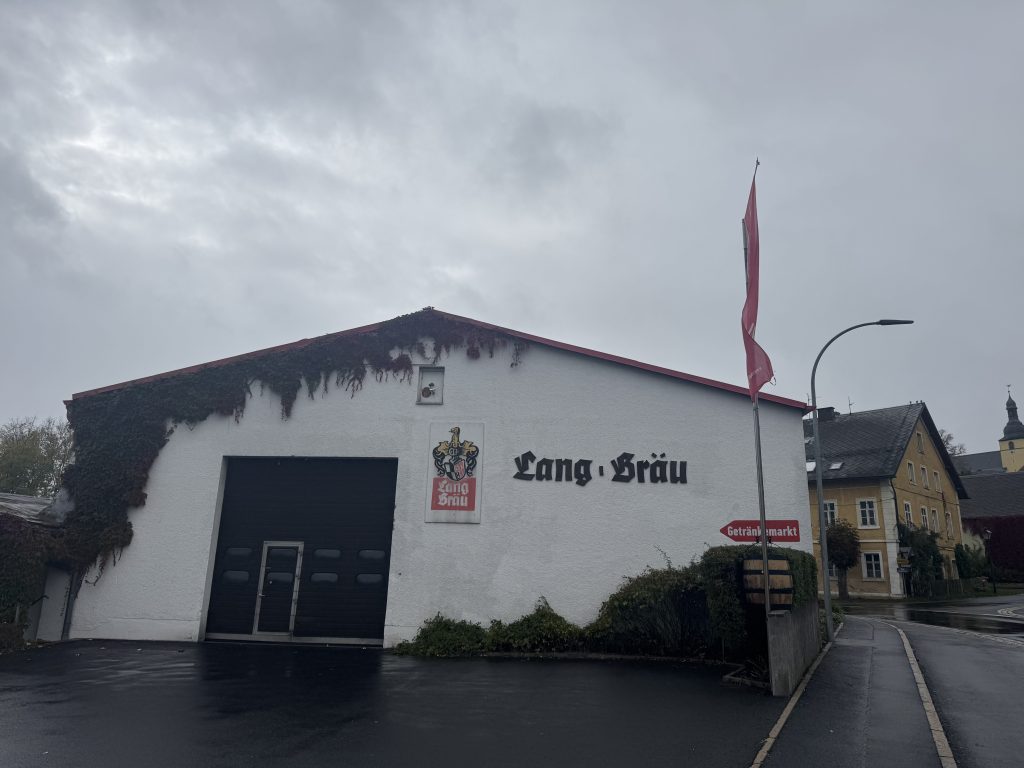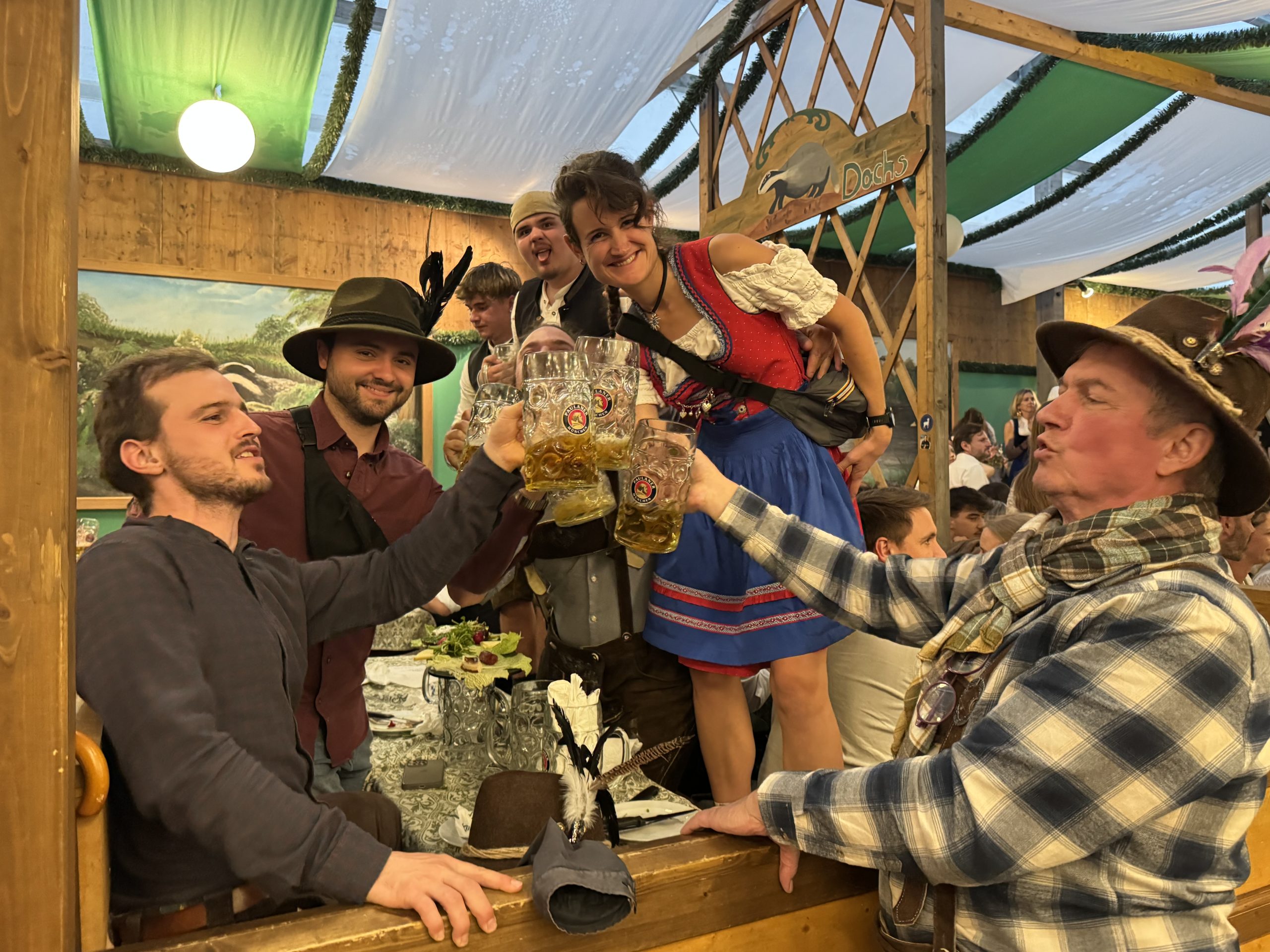Published by UnHerd (11th October, 2025)
The party is in full swing in the Theresienwiese. Thousands of people are packed into scores of tents on the edge of Munich, singing boisterously, dancing on sodden benches and swigging down vast quantities of beer.
Welcome to Oktoberfest, the world’s biggest beer festival, which began in 1810 to celebrate a royal wedding and this year drew over six million revellers from across the world. Like a giant Christmas party, it is filled with good-natured revellers and resounds with goofy German humour. Locals mix with tourists and celebrities. The Bayern Munich football team had been in for a few steins,with Harry Kane dutifully decked out in lederhosen — while Arnold Schwarzenegger was spotted a few days earlier chaotically conducting a band. Armies of waiting staff rush around delivering plates piled high with pork and vast glasses of frothy booze. “It’s better than I thought it would be,” says Osvaldo from Mexico City, as he polishes off his fifth stein. “We don’t have good beer because it is mixed with other shit,” he says. “But here it’s different — you don’t need lemon and all that other stuff.”
Beer, of course, is more than just a drink in Germany. It has special significance; it is part of their nation’s cultural heritage. And it also has economic clout: Germany is one of the world’s biggest beer producers with around 1,500 breweries, many of them based in Bavaria. But beyond the revelry, all is not well for this cornerstone of German culture. For just like the country’s pivotal car industry, the cherished brewing sector is struggling. Sales of alcoholic drinks fell more than 6% in the first half of this year compared with last year. And the average German now consumes only 88 litres of beer a year, down from 126 at the start of the century — a decline fuelled in large part by abstemious younger generations.
Even here at Oktoberfest, the problems are apparent. “I don’t really like beer — it’s so heavy,” confesses one young woman outside a raucous tent. Her friend agrees. Young Germans, she tells me, are significantly changing their approach to well-being. “They want to live healthier.”
Not that everyone is into wellness. In one tent, I come across a lively group snorting what I presume was cocaine from the top of a bald man’s shiny head. One gives me a big grin as he sniffs deeply, then wipes his nose. Two tables down, another ebullient gang of pals pass around a mirror with chunky white lines laid out on it. Minutes later, I pass yet another high-spirited gaggle tapping small piles of powder onto their clenched fists. Yet as Benedict, a young data analyst, tells me when I describe these enthusiastic scenes of debauchery, Oktoberfest “is the biggest drug festival in the world if you count alcohol as a drug”. And it seems many do. In a YouGov survey, almost half the 18-24 age group said they were teetotal — the highest in Europe. Consumption of alcohol among younger teenagers is at an all-time low, storing up future problems for the beer sector.
The German drinks industry is far from alone in confronting such a situation. Times are tough in Britain, too, with scores of breweries and hundreds of pubs closing annually; wine sales in France have crashed, and in the US increasing numbers of the young in the land that once had prohibition are more likely to be teetotal.
But in Bavaria, the heartland of the traditional brewing industry, the crisis is hitting hard. Schönbrunn, close to the Czechia border, has been the home of the Lang-Bräu brewery for 172 years, surviving some of the most tumultuous events in European history. But after struggling for the past two decades, it has closed. When I visit, the brewer Richard Hopf, 38, explains what it was like to close a family-run firm after six generations. “Some people were crying — most of the village is very sad,” he says, trying to capture the significance of small breweries in these close communities. “In the past there was the church, but for the last 30 years it was the brewery,” he tells me “People would come here, buy your beer, drink one, talk. It was a big place for getting together. Everyone knows each other here.”
Hopf shows me around the maze of rooms where for decades his family fermented, cooled and stored their beer, pointing out proudly the machines which could fill 6,000 bottles an hour, but which now stand silent. This plant used to produce 1.5 million litres annually, exporting about 20% of their output to China and Korea at one point — although most sales have been within a 30-mile radius.

As we tour the ghostly plant, he tells me about his father winning a burst of global media attention after making “Erotik bier” — with a highly-suggestive label — as a joke. But those carefree days are long gone. As the cost of energy and staff rose in recent years — and with cut-throat supermarkets dominating sales — beer prices remained largely static. “The end result,” he says wistfully, “is the market just goes down and down and down.” And in such a climate, the family firm could not get the financing needed to modernise — so these days their storage rooms are stacked high with empty bottles.
While the closure has been painful, Hopf and his brother were left with little choice. The machinery and buildings were constructed in the decades after the Second World War and were too dated for efficiency. “You must think 20 years in the future,” he explains. “You have to forecast the beer you might sell then, but we knew things were only going to get worse because the baby boom generation is dying and younger ones drink less beer.”
It is a similar story in Bamberg. A hundred kilometres away, set in rolling hills, it reflects centuries of history and is famed for its number of breweries and its diversity of beers — including the local speciality, Rauchbier, a smoked draft served straight from oak barrels. Inside Schlenkerla, a bustling time-warp tavern, one manager explains the appeal beer’s appeal, telling me their brands sell around the world. “I was recently in Lviv, in Ukraine,” she says, “and I saw a whole shelf of our beer there.”
But having survived the war largely unscathed, its breweries know they face a struggle. And it soon becomes clear that this 28-year-old saleswoman is emblematic of the sector’s problems. “Bavarians are more likely to drink beer than other parts of Germany but I prefer wine,” she tells me. “I don’t drink so much personally. I am very boring. And all my friends are into sport or health. They have maybe a beer at the weekend with their dinner. But when you work here it seems like only older people drink.” When I ask her what she meant by “old”, she replies: 40.
The manager of an Irish pub over the road echoes the sentiment. “I know it is a national symbol but it’s not for me,” he confesses. In Wirtshaus Graser, the town’s newest microbrewery, the barmaid says business is good — but even she sounds a warning, admitting that Gen Z Germans seem far more abstemious than their predecessors. “I am from the generation that partied and drank a lot during their teenage times.” Her younger sister, she says, “is not as adventurous as we were”.
Falling sales, rising costs and generational change have created an existential crisis for German beer makers — and sales of the alcohol-free products that now comprise almost one-tenth of their output will not fully plug the gap. But exports are falling even faster than the intensifying domestic decline, leading the head of one major brewery to warn two months ago about a “landslide” that would sweep away both big and small firms. “The brewing world is crumbling,” says Stefan Blaschak, managing director of Oettinger, which is closing one of its four plants. It is a huge dent in the self-image and confidence of the nation that powers the European economy — something which cannot be masked by all the beer-soaked revelry, drinking chants and sea of lederhosen at Oktoberfest.
Concealed by the jollity of Bavaria’s biergartens and the frenzied Oktoberfest partying, another national champion is flailing in an economy that is strugging to adapt to a world of rapid political, societal and technological change. The number of German jobless hit 3.02 million in August, the highest figure for a decade, as the manufacturing giants that drove the post-war economic boom shed staff. Industrial output slid 4.3% on the previous month as car production crashed to its lowest level since the start of this century. All those dirndl-clad waitresses clutching overflowing steins of golden Helles might be the nation’s fetching global image, but it is pretty sobering to see that Germans, of all people, are losing their thirst for beer.
